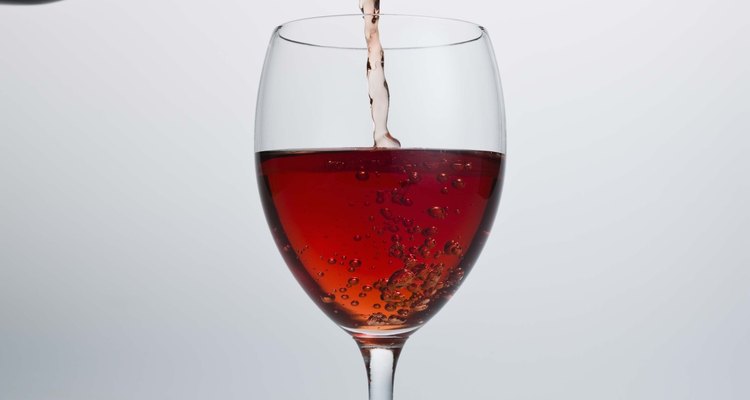
Jupiterimages/Stockbyte/Getty Images
Shaking, intentionally or unintentionally, may ultimately affect the taste and appearance of a bottle of wine. Wine is composed of a complex combination of organic elements, continuously evolving. Shaking separates these elements, sometimes – but not always – causing the wine to go into shock. Rest assured, if a bumpy ride home from the spirit shop shakes your bottle, the wine inside is not ruined, but you might need to wait to drink it.
Shaken Sediment
At times, shaking does nothing more than spread sediment throughout an otherwise good bottle of wine -- a problem seen more in red wines than whites. If the overall color of the wine remains unaffected despite the presence of floating sediment, simply allow the bottle to sit for a few hours so the sediment falls back to the bottom before serving. In some cases, noticeable amounts of sediment indicate a wine illness that requires a more extensive rest time to resolve.
Total Shock
Bottle shock, also known as bottle sickness, is associated with shaking wine. Although the condition can affect newer wines, older, more fragile wines – 10 years or older – tend be most affected because they contain quite a bit of sediment. Shaking wine, either during the bottling process or travel, stirs up sediment residing on the bottom of the bottle, causing the rich, translucent color of the wine to cloud. Flavors also separate after shaking, affecting taste.
Clearing it Up
Bottle shock is a temporary problem, easily resolved by allowing your wine to rest prior to drinking. How long the wine must rest depends on factors including grape type, bottle size and storage conditions. While the settling process can take up to three months in some cases, a wine can clear up in as little as eight weeks. Choose a cool, dry place to store your sick wine during the rest period.
Old and Fragile
An old wine is a fragile wine. Even the slightest shake can disturb the sediment and separate the flavors inside the bottle. For this reason, save older wines for home drinking and younger wines for travel. When removing a fragile wine from storage on its side, slowly raise the bottle to the upright position. Keep the bottle upright for 24 hours, allowing the sediment to fall to the bottom of the bottle without shaking or disturbing the bottle.
Decanter Option
Even a small amount of motion can stir sediment in older wines, but decanting makes it possible to separate sediment from wine. After popping the cork, wipe the neck of the bottle clean. Shoot a flashlight toward the bottle and note the location of the sediment -- which might appear as cloudy wine -- as you slowly pour the wine, nonstop, into a clean, clear vessel. Stop the pour as soon as the sediment reaches the neck, discarding the remaining contents inside the wine bottle. Pour the decanted wine from the vessel into awaiting glasses.
Related Articles

Why Is White Wine Turning Brown in a ...

Should I Store Red Wine Horizontally or ...

How to Use Bentonite for Clearing Wine

How to Make Homemade Wine Taste Better

Does a Chilled Champagne Bottle Need to ...

Why Does Wine Not Expire?
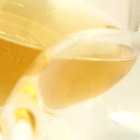
How to Store Cognac
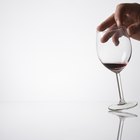
How to Pasteurize Homemade Wine
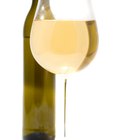
How to Remove Mold From Wine

How Long Can a Bottle of Vodka Last ...

Does Brandy Ever Go Bad?

Does Unopened Sake Go Bad?

How Long Does Liquor Keep in Storage?
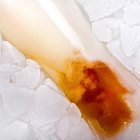
Will Beer Freeze in the Freezer?

What Happens to the Alcohol ...

Types of Bacteria in Wine

What Is the Difference Between Wine & ...
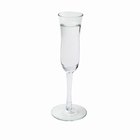
Will Vodka Go Bad if It Is Left in the ...

How to Tell When Orange Juice Has ...

How to Use Wine Conditioner
References
Writer Bio
Jonae Fredericks started writing in 2007. She also has a background as a licensed cosmetologist and certified skin-care specialist. Jonae Fredericks is a certified paraeducator, presently working in the public education system.
Photo Credits
Jupiterimages/Stockbyte/Getty Images